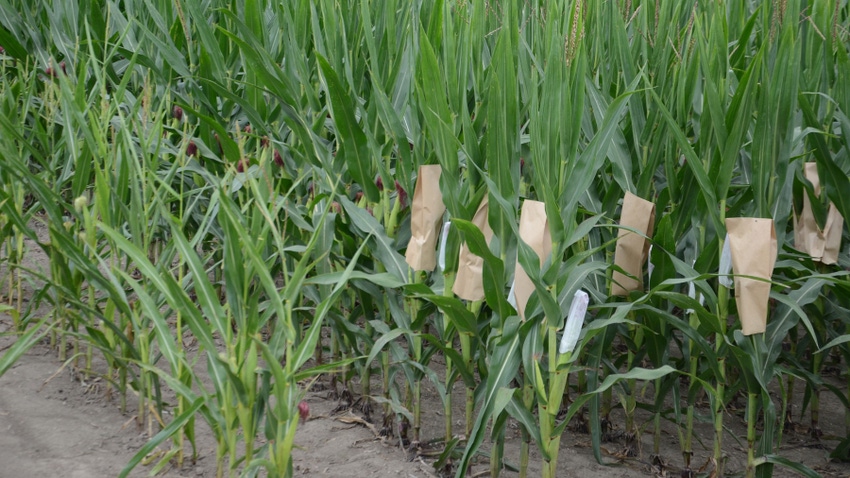January 31, 2023

Planning for what is to be planted in the research nursery is a critical task performed by a corn breeder. From start to finish, a single corn breeding project may last five to 10 years. Corn breeders must set their objectives each time before starting a new breeding project.
Therefore, there are multiple breeding projects at different stages in a corn breeder’s nursery each year. I had the good fortune to work for several seed companies and had winter nurseries in Florida, Hawaii and Puerto Rico. We needed at least five inbreeding generations to produce genetically and phenotypically uniform inbred lines which could be used as parents in hybrid combinations.
Here is a closer look at how a nursery might be laid out, including projects at different stages in the process. This description is based upon how I staged my breeding nurseries.
Genetic populations. Before starting a new plant breeding project, a breeder gathers or creates genetic populations that should contain agronomic characteristics desired in new hybrids. These populations may come from experiment stations or were created during the previous year.
Planting 10 rows about 20 feet long for each population is common. All breeding populations and genetically segregated families are inoculated with diseases when the plants are ankle-high. By blending inoculum with sawdust, it goes farther. To make sure no plants escaped exposure, inoculum is spread again at the knee-high stage.
Plants selected for most disease resistance are self-pollinated for the next breeding cycle. Leaves from plants with the most disease lesions are naturally dried and saved to become inoculum next year. After pollination, selected hand-pollinated plants are inoculated with stalk rot. This rigorous selection process creates “first selfed,�” or S-1, breeding populations.
S1 lines. From each ear saved from the new populations, a single row about 20 feet long at 70,000 seeds per acre is planted. High seeding rate exposes plants to population stress. Ears from S1 rows go to winter nurseries as S2 lines for self-pollination.
S3lines. Seed from inbred S2 lines is planted in summer nurseries in the Corn Belt. Self-pollinating these plants produces S4 lines for winter nurseries. S5 lines are also planted in summer nurseries.
Hybrid crosses. I started crossing S3 lines with one potential parent line for hybrid combinations. I would make these crosses in foundation seed production fields. Preliminary experimental hybrids were first tested at two locations on different soil types. These tests included current commercial hybrids of similar relative maturity along with competitive hybrids. Of course, the idea was developing the best hybrids on the market. The most promising experimental hybrids were produced in paired-row crossing blocks to produce more seed.
New hybrids. After testing for at least three years at multiple locations, promising new inbred lines were multiplied by hand pollination in a separate section of the nursery. This seed would be sent to the company’s foundation seed department to increase the quantity of seed.
If new hybrids were added to the lineup, each was given a number and turned over to the seed production department. New hybrids were announced to the sales department for selling to farmers in the regions where each hybrid was best adapted.
Nanda is director of genetics for Seed Genetics Direct, Jeffersonville, Ohio. Email [email protected] or call 317-910-9876. Please leave a message.
About the Author(s)
You May Also Like






